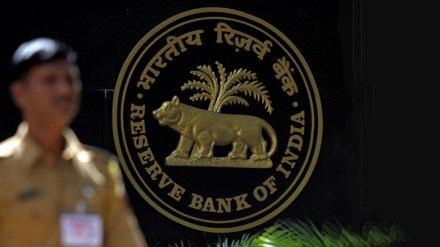High frequency indicators, like vehicles sales, air traffic, steel consumption and GST E-way bills, point towards a sequential pickup in activity during the second half of 2024-25, the Reserve Bank of India bulletin for February said on Wednesday, adding that the momentum will sustain moving forward.
However, it cautioned that a strong dollar, driven by the US economic resilience and trade policy pivots, could exacerbate capital outflows from emerging economies, push risk premiums higher, and intensify external vulnerabilities, said an article on “State of the Economy” that is part of the monthly bulletin.
The RBI’s internal models, based on high-frequency data, suggest the gross domestic product (GDP) growth improving to 6.6% in the January-March quarter this year. The central bank has forecast growth at 6.7% in 2025-26, at the higher end of the government’s forecast of 6.3-6.8%.
The RBI expects inflation to ease to 4.2% in the next financial year, but flagged continuing risk to prices.
According to the article, which doesn’t necessarily reflect the RBI’s views, the Budget 2025-26 prudently balances fiscal consolidation and growth objectives by continued focus on capex alongside measures to boost household incomes and consumption. The domestic demand is also expected to benefit from the 25 bps repo rate cut by the Monetary Policy Committee (MPC) in its meeting on February 7, 2025, it said.
Strong rural demand is expected to receive a further fillip from the robust performance of the agriculture sector, it said. “Urban demand is also poised for a recovery, tracking decline in inflation as well as a boost to disposable incomes from the sizeable income tax relief announced in the Union Budget 2025-26,” the report noted.
The Centre sharply raised the income tax exemption limit to Rs 12 lakh from Rs 7 lakh in the new tax regime, which the government said would leave around Rs 1 lakh crore cash in the hands of taxpayers. It also lowered its fiscal deficit estimate for 2024-25 to 4.8% of GDP from 4.9% and projected to come down to 4.4% in 2025-26.
“While core inflation remains muted, uncertainty in global financial markets, volatility in energy prices and adverse weather events present upside risks to the inflation trajectory,” it said.
Financial markets remain on edge on the slowing pace of disinflation and the potential impact of tariffs. Emerging market economies (EMEs) are witnessing selling pressures from foreign portfolio investors (FPIs) and currency depreciation engendered by a strong US dollar, the article said.
